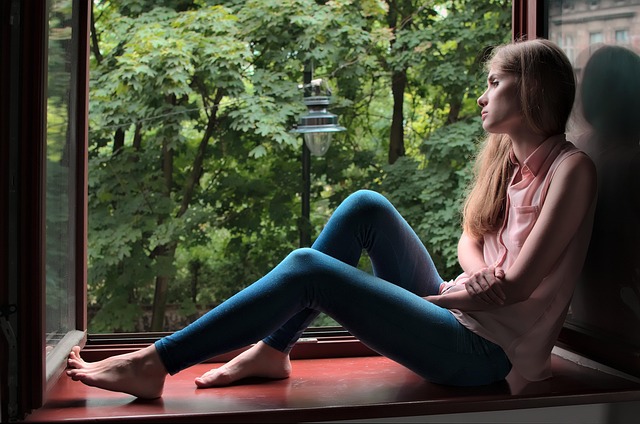
On March 11, 2020, the WHO declares COVID-19 a pandemic; one day later, the first death occurs in Austria. On March 16, the federal government decides on the first lockdown: the aim is to protect human lives. But in doing so, it endangers those who are not safe at home. A report on increased domestic violence by Corona and help for those affected.
PANDEMIC ESCALATED VIOLENCE AGAINST WOMEN
Even before Corona, one in three women worldwide was affected by partner violence, according to WHO data. In the wake of the Corona pandemic and the accompanying curfews, the situation worsened drastically in 2020: reports received by the WHO from the USA, China, the UK and Germany showed an increase in reported cases of domestic violence between 10 and 50 percent. For our German neighbors, this development is backed up with concrete figures: According to a June 2020 study by the Technical University of Munich (TUM), about 6 percent of German women were victims of physical and/or sexual violence during the first “hard” lockdown. Violence against children occurred in 6.5 percent of German households, according to the study.

INCREASE IN DOMESTIC VIOLENCE IN AUSTRIA
The Federal Department of the Interior published a similar analysis in September 2020. It is a representative survey of the public’s perception of domestic violence during the Corona Lockdown. The result: Corona domestic violence cases have also increased in Austria. In cities with a population of 50,000 or more, cases of domestic violence involving police intervention increased by 26 percent during the first lockdown, and in smaller cities and rural communities by 9 percent. In addition, more than one-third of respondents reported a general increase in intra-household tensions since the pandemic began.
THE PANDEMIC AS A FIRE ACCELERANT
Many studies on domestic violence during Corona have come to a similar conclusion: the tightened conditions around curfews and no-contact orders are rarely the cause of physical assaults – but they are a catalyst. In most households where reported incidents have occurred, domestic violence against women and/or children existed before the pandemic.
The violence does not necessarily have to be physical: According to the TUM study, just under 5 percent of the women surveyed said their partner had controlled both their physical and digital contacts during the Corona pandemic. 2.2 percent even said they had not been allowed to leave their home without their partner’s permission.
FINANCIAL WORRIES INCREASE SUSCEPTABILITY TO VIOLENCE

The closure of schools and kindergartens in the wake of the Corona pandemic left a care vacuum in many households. At the same time, elderly and/or relatives with pre-existing conditions had to be cared for in their homes for weeks at a time. In many families, wives and mothers took on much of this extra work. In order to be able to do this, many of them have reduced hours or even quit their jobs altogether.
Combined with short-time work and the “slump” of entire industries such as gastronomy and tourism, financial pressure has built up in many places, which, according to the TUM study, has also resulted in an increased willingness to use violence.
Women from families with financial concerns were significantly more likely to report physical assault than women from financially stable households, according to the study.
NO ALL-CLEAR AFTER CORONA
Domestic violence has existed since before the pandemic. The fact that restrictions are falling worldwide and life feels (almost) normal again in many places does not change the fact that violence against women and children is a massive social problem and omnipresent – precisely BECAUSE it mostly happens behind closed doors.
The rising tide of violence during Corona showed that it often only takes a spark to ignite the potential for violence.
During the pandemic, that “spark” was external pressure, overwhelm, and the reduction of social contacts. In the coming weeks and months, it will be financial worries and the very real danger of not having enough money for heating in the winter months. This makes it all the more important for those affected to know where to find help.
HELP FOR THOSE AFFECTED
On the website of the Autonomous Women’s Shelters of Austria you can find an overview of the most important contact points under the heading I need help, including
- the women’s helpline against violence: https://www.frauenhelpline.at/
- the addresses of all women’s shelters in the country: https://www.aoef.at/index.php/frauenhaeuser
- all violence protection centers and intervention agencies in Austria: https://www.aoef.at/index.php/gewaltschutzzentren
- a listing of all free advice centers: https://www.aoef.at/index.php/beratungsstellen
- the HelpChat for free and anonymous advice: https://www.haltdergewalt.at/
You want to help? In light of rising energy prices and the growing financial hardship faced by many families, Caritas has launched the “A Spark of Warmth” campaign. On the website, you can donate an amount of your choice that will help alleviate the financial pressure in affected families in the coming weeks and months.
Translated by Emily Schiffer
#AgainstHumanTrafficking #Gegenmenschenhandel #EndExploitation #EndTrafficking #HopeForTheFuture #Austria
